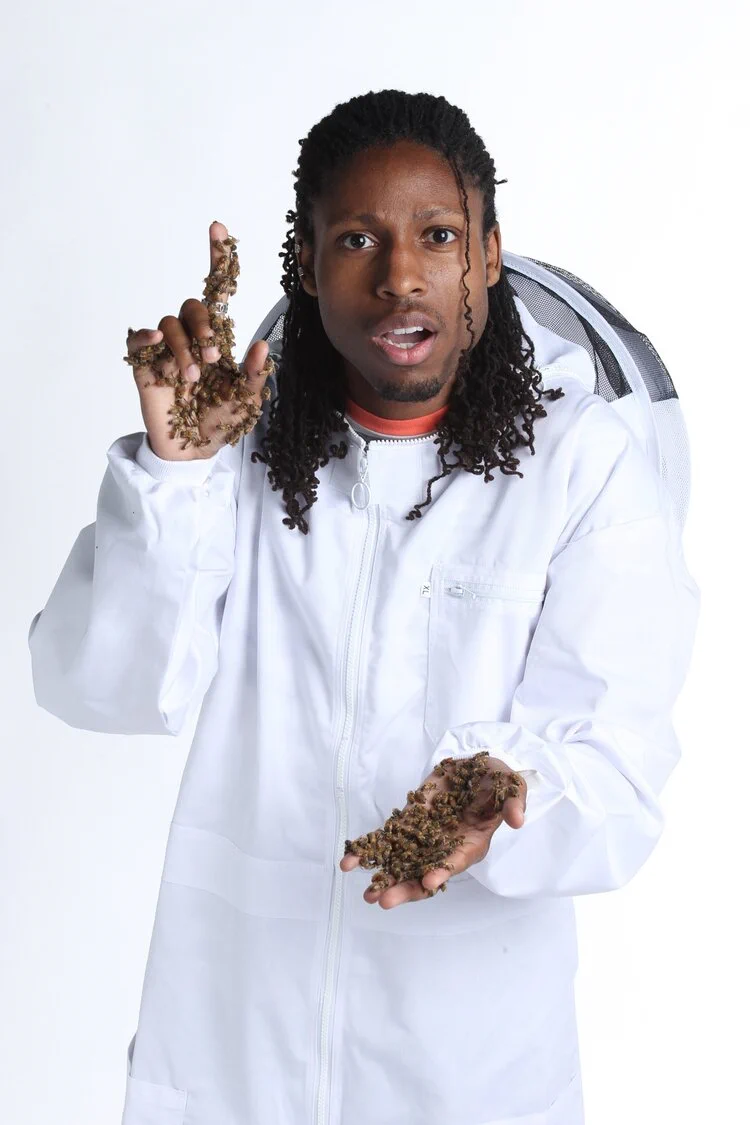In 2019, a study of varroa mites dispelled the long-held theory that these parasites feed on the hemolymth of honey bees. The research team, led by Dr Samuel Ramsey, discovered that, contrary to popular belief, varroa mites feed exclusively on the ‘fat bodies’ of bees. To put this into more relatable terms the ‘fat body’ is an organ akin to the liver in humans.
This multi-dimensional study, which looked at feeding assays and various observational analysis, has been a paradigm shift in our understanding of the relationship between varroa and host. While varroa has undoubtedly had an impact on global honey bee populations, the biology underlying their devastating effect has been less clear.
To feed on the fat body, the Varroa mite pierces through a membrane layer underneath the abdominal plates of the adult bee. As fat body tissue is spread throughout the bodies of immature bees, varroa are able to access it from anywhere on the body. Once attached, the mite then injects an enzyme that destroys the vital structure of the organ, allowing for easier consumption. This causes severe damage to the individual bee and larvae, without necessarily leading to immediate death.
About Dr. Sammy Ramsey

Web: https://www.drsammy.online
The 9 vital functions of fat body
But what role does the fat body play and why does it matter if it is fed upon by the varroa mite? Following the 2019 study, Dr Samuel Ramsey has broken down 9 of the functions of the fat body and illustrated how varroa mite feeding impacts each of them.
- Growth und Metamorphosis
- Storage & Energy/Nutrient Mobilization
- Pesticide Detoxification
- Water loss / Osmosregulation
- Immune Function
- Temperature Regulation
- Metabolic Activity
- Protein & Fat Synthesis
- Vitellogenesis
Growth and Metamorphosis
The fat body is responsible for the metamorphosis from egg to larvae, and larvae to pupea. (When we look at larvae, the white, creamy insides of the organism is actually fat body tissue). When the fat body is compromised during development, the bees growth is stunted, resulting in smaller specimens with reduced lifespans.
Storage & Energy Mobilization
The fat body acts as an energy storage center and enables energy mobilization when needed. This function is essential for adult bees, particularly when foraging. Due to the large wing-to body ratio, flight requires huge amounts of energy. When a bee is unable to convert their energy stores, it will often not be able to return to the hive. This is most evident when hives are found to be empty without deadfall.
Pesticide Detoxification
Bees with compromised fat bodies are more sensitive to pesticides, as the fat body detoxifies pollutants. Even low concentrations, which would be considered ‘non-lethal’ to healthy bees, cannot be broken down. Therefore, the bees are more exposed to pesticides at even lower concentrations, which negatively impacts the population.
Water loss and Osmosregulation
The fat body produces a thin layer of wax which covers the bee’s exoskeleton. This layer functions as a natural protective barrier and helps to retain internal water levels. Compromised bees have a thinner, or sometimes absent layer of wax on their surface, which results in the loss of water, and subsequently, death due to desocation.
Immune function
Immune function is reduced when fat bodies are compromised, as the organ is responsible for the production of anti-microbial peptides. These anti-microbial peptides are the first line of immune defense. Whereas bees with healthy fat bodies are better able to manage virus’s, bees that have been subject to varroa are more susceptible. An example of this is the higher incidence of Deformed Wing Virus in hives with severe varroa infestation.
Temperature regulation
The fat body helps to regulate temperature in two ways. Firstly, the fat body acts as an insulating layer. The fat body also produces the hormones that inform the bee whether they are too hot or cold, in a similar way as the hypothalamus does in humans. When this is not functioning properly, bees fail to recognize the threat and to activate their flight muscles to regulate heat. This attribute is partly responsible for phenomenon of winter colony loss.
Metabolic activity
Reduced metabolism is particularly problematic in high energy instances such as flight. In order to create lift and to fly, bees flap their wings 230 times per second. Additionally, they need to cope with various environmental and elemental challenges such as wind and rain, which puts more pressure on the metabolic system.
Protein and Fat synthesis
Adult bees produce a protein solution that aids in the growth of young bees and queens. When the production of this protein is reduced, more bees are required to care for the same quantity of brood. This strains resources, so less bees are able to forage and produce honey. As such yields drop.
Vitellogenesis
Vitellogen is an egg yolk protein expressed by all egg-laying animals, which is essential for development. However, as the queen is the only bee in a colony to produce eggs, and varroa do not feed on queens, bees have evolved to put Vitellogen to a new use. By storing Vitellogen in the fat body, bees can reduce oxidative stress, which rapidly slows the aging process. The more Vitellogen stored in the fat body, the better equipped a bee is to survive the long winter period. As varroa suck Vitellogen from the fat body, they deplete the stores required to last the colder months.
Conclusion
As with all complex systems, many variables have an impact on the health of the honey bee. Not only does the fat body anticipate and perform many vital functions, but these functions are also dependant on one another. This is a challenge to understanding the devastating effect of varroa. However by revealing the real diet of parasite, and better understanding the integral roles played by the fat body organ, we are in a better position to solve the problem of colony loss.
Image credits
Pictures from Samuel Ramsey were taken from https://www.drsammy.online.